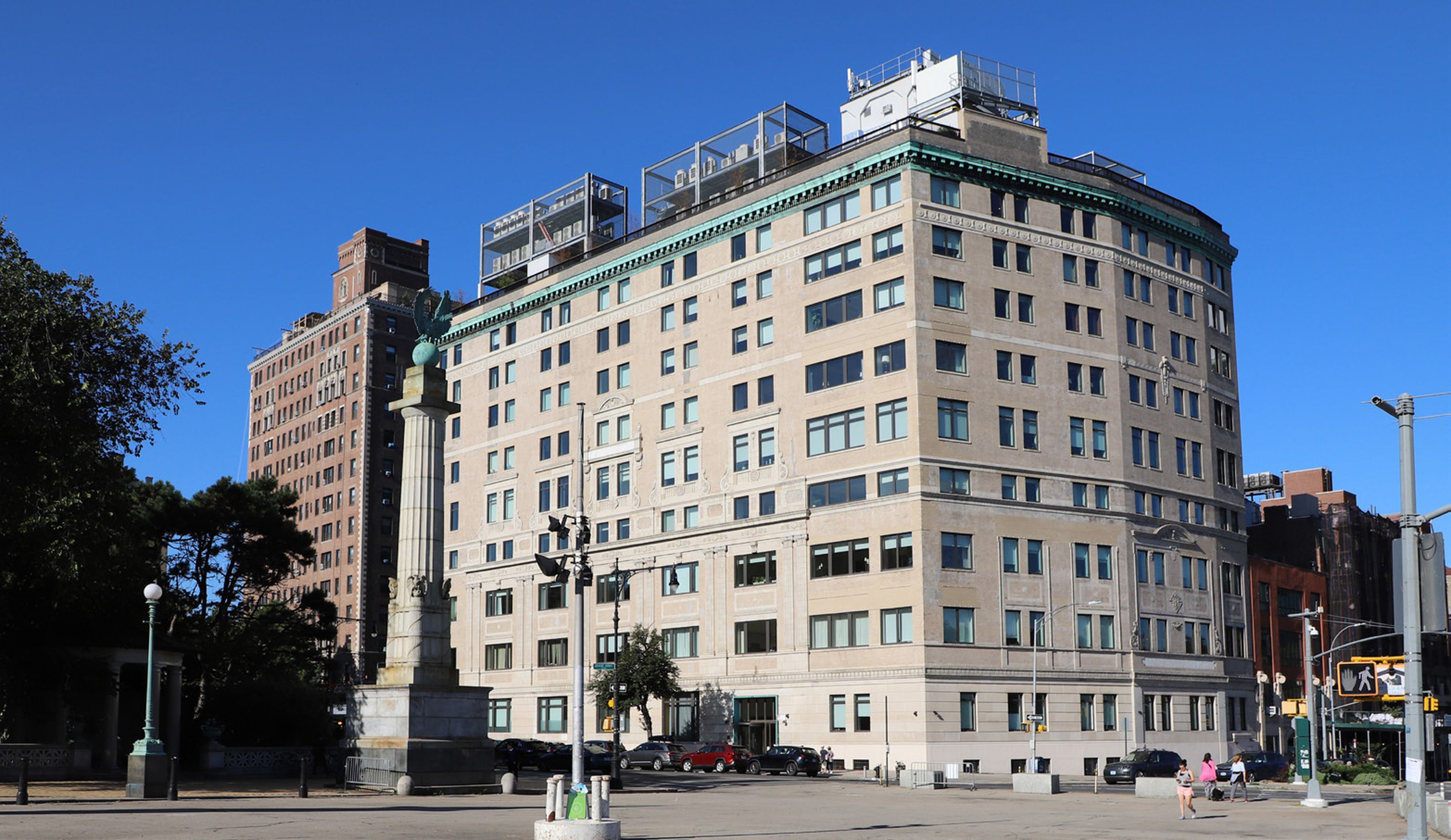
One Prospect Park West

Originally completed in 1925 as the administrative and social headquarters of the Knights of Columbus in Brooklyn, One Prospect Park was reimagined a century later from an office building into a sales-record breaking condominium building.
The Classic Revival-style structure stood vacant in recent years before undergoing a major transformation into a luxury, 63-unit residence. Amenities include a private, curated art gallery, landscaped roof deck, spa and residents club.
| Client | Sugar Hill Capital Partners |
|---|---|
| Architects: | IBI Group, ODA, Workstead, New Amsterdam Design Associates, Surface Design Group, and AYON Studio |
| Size | 9 Stories | 170,000 SF (15,738 SM) | 63 Units |
| Sustainability | Adaptive reuse (office-to-residential conversion), landscaped roof terrace |
| Office: | New York |
| Completion: | 2021 |

Retrofitting the complex building posed a significant structural challenge, which our engineers resolved in ingenious ways. To optimize the space for condominium layouts, central corridors needed to be created on all floors. However, the original lower floors had been designed with long-span, column-free ballrooms and a pool across multiple levels—all supported by end-to-end trusses rather than columns.
These cross-bracing trusses lay directly in the path of the planned corridors, so our team needed to remove them to create the corridors, which meant transferring loads to a completely new system of columns and foundations with new piles and pile caps. Our creative solution involved lifting the building with hydraulic jacks to remove the obstructing trusses, and replace them with new columns—transferring the loads to them before lower the building back into place and cutting new openings to create the corridors.
Additional structural alterations to the building included the addition, expansion, and relocation of elevator cores to accommodate residential use and a freight elevator, replacement of sections of the roof, strengthening of the existing roof to support new amenities, as well as updates to the structure to support new MEP systems. We also devised new steel supports for back-up walls during restoration of the historic façade and windows.







